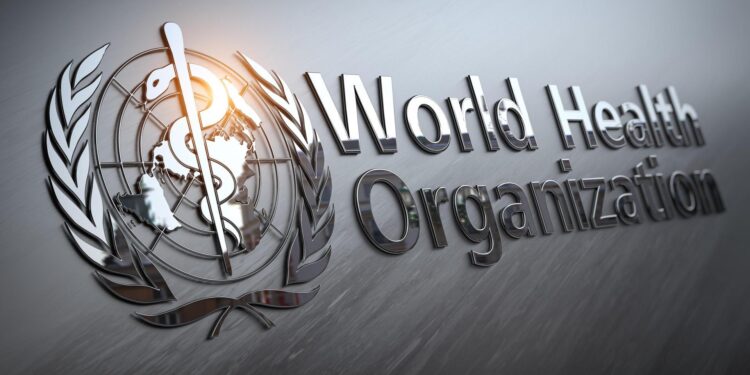The World Health Organization (WHO) has unveiled new country guidance aimed at strengthening health emergency coordination worldwide. This latest initiative seeks to enhance preparedness and response efforts by providing clear frameworks and best practices for governments and health agencies. As global health threats continue to evolve, the WHO’s updated guidance offers a critical tool to improve collaboration, streamline decision-making, and ultimately save lives during crises.
WHO Unveils Comprehensive Framework to Strengthen National Health Emergency Coordination
In a decisive step towards enhancing global health security, the World Health Organization has introduced a pioneering framework designed to empower countries in effectively managing health emergencies. This new guidance prioritizes a harmonized approach, ensuring that national agencies can coordinate rapidly and efficiently during crises such as pandemics, outbreaks, and natural disasters. By establishing clear protocols and delineating roles, the framework aims to minimize fragmentation and improve response times, ultimately saving lives and resources.
Key elements of the framework include:
- Integrated coordination structures that connect government bodies, health services, and community organizations.
- Standardized communication channels to facilitate real-time information sharing.
- Resource mapping and mobilization strategies tailored to different emergency scenarios.
- Capacity building programs to strengthen local emergency response teams.
| Component | Focus Area | Expected Outcome |
|---|---|---|
| Coordination Hub | Centralized decision-making | Faster crisis response |
| Communication Network | Information dissemination | Accurate, timely data flow |
| Resource Database | Inventory management | Optimal resource allocation |
| Training Modules | Skill enhancement | Prepared, confident responders |
Key Strategies for Enhancing Multi-Sectoral Collaboration in Crisis Response
Effective collaboration across sectors is crucial for a swift and unified crisis response. Emphasizing transparent communication channels significantly reduces misinformation and aligns objectives among health, logistics, security, and community agencies. Integrating real-time data sharing platforms ensures that decision-makers at all levels have access to the latest information, enabling rapid adjustments to evolving situations.
Building on these foundations, capacity strengthening and joint training exercises foster mutual understanding of roles and responsibilities, enhancing operational synergy. Stakeholders are encouraged to adopt the following approaches to optimize their partnerships:
- Establish clear leadership structures to coordinate multi-agency efforts efficiently.
- Develop joint contingency plans tailored to local contexts and resource availability.
- Promote inclusive stakeholder engagement ensuring vulnerable populations are represented.
- Leverage technology platforms for seamless information exchange and monitoring.
| Strategy | Primary Benefit | Key Actor |
|---|---|---|
| Transparent Communication | Aligned decision-making | Health Authorities |
| Joint Training Programs | Enhanced operational synergy | Emergency Responders |
| Data Sharing Platforms | Real-time situational awareness | Technology Experts |
| Inclusive Engagement | Equitable crisis management | Community Leaders |
WHO Recommends Best Practices for Building Resilient Health Systems Amid Emergencies
Strengthening health systems to withstand emergencies is a priority emphasized by the WHO’s latest guidance. This framework urges countries to adopt integrated coordination mechanisms that foster timely response, equitable resource distribution, and community involvement. Emphasizing adaptability and robust infrastructure, the recommendations seek to empower frontline health workers and ensure continuity of essential services during crises.
Key components highlighted include:
- Multisectoral collaboration: Engaging government bodies, civil society, and the private sector to unify efforts.
- Data-driven decision making: Leveraging real-time information for proactive management.
- Community engagement: Building trust and ensuring culturally sensitive communication.
- Capacity building: Continuous training and resource allocation to sustain readiness.
| Resilience Pillar | Key Actions |
|---|---|
| Coordination | Unified command centers and clear leadership roles |
| Surveillance | Enhanced monitoring systems for early threat detection |
| Supply Chain | Secure logistics and contingency stockpiles |
| Community Trust | Transparent communication and participatory engagement |
Future Outlook
As the World Health Organization rolls out its new country guidance for health emergency coordination, governments and health agencies worldwide are urged to adopt these recommendations to enhance preparedness and response capabilities. Effective coordination remains a critical factor in mitigating the impact of health crises, and WHO’s updated framework aims to streamline efforts across sectors and borders. Stakeholders will be closely monitoring the implementation and outcomes of this guidance as the global community continues to confront ongoing and future health emergencies.































